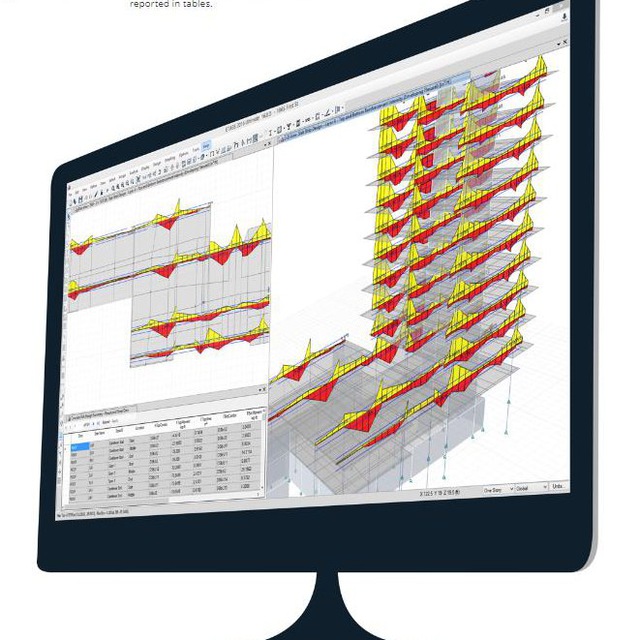A summary of the behavior of Koppel shear walls
If two shear walls located on the same plane are connected to each other by joint members that transmit only axial force, the anchors applied to them are supported by the internal anchors of both walls. The amount of internal anchors has a direct relationship with the bending stiffness of the beams. As a result of the internal anchors, the bending stresses are distributed linearly along the length of each wall, and the maximum compressive and tensile stresses are at the edge of the walls, but if the walls are connected to each other by rigid beams, they form a double vertical structure, and the anchor applied by both walls Similar behavior of a composite assembly will be tolerated by bending around the central axis of the assembly, in which case the bending stresses are distributed linearly along the length of the composite assembly with maximum tensile and compressive stresses at the two end edges. In practical conditions, two walls are connected to each other by flexible beams, which are practically a state between two different states. These two modes determine the behavioral limits of the perfect walls. The harder the beam is, the behavior of the structure will be more like a compound beam, and the efficiency of the system can be measured by the degree of closeness of its behavior to the compound beam. When the walls are displaced under the effect of lateral loads, the ends of the connecting beams are forced to rotate and change their position. and they will find a two-curved bend and in this way they will bear the free anchors of the walls. The bending behavior of the walls creates cuts in the connecting beams, and as a result, the beams introduce anchors opposite to the external anchors on each wall. The shearing of the beams in the wall creates an axial force, which will be tensile on the load side and compressive on the opposite side. Therefore, the anchors caused by the applied load at each level of the structure are supported by the sum of the bending anchors of the walls at the same level (m1 and m2) and the anchor caused by the axial force (n.l). where n is the axial force in each wall and l is the distance between the central axis of the walls:
M= m1+m2+n.l
The n.l parameter represents the reverse anchor caused by the bending of the connecting beams, which counteracts the free bending of the wall. Connecting beams will have the role of reducing the value of the wall anchor by interfering with the axial forces in bearing part of the external anchor. Since the arm of the anchor l is relatively large, the relatively small axial stress can have a large contribution to the bearing of the anchors, as a result, while the tensile stresses in the wall are reduced, the tensile stresses caused by the applied loads are neutralized by the compressive stresses caused by the weight loads. It is also easily possible. (Taken from the book Tall Structures by Alex Cole and Brian Smith)
[Join to channel: @mojtabaa_shiri]
This post is written by MOJTABA_SHIRI
